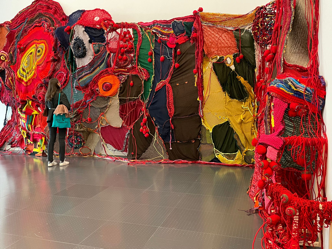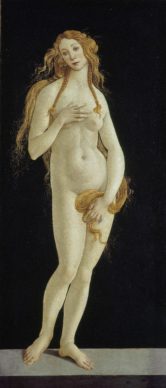
Autorship
Not a year goes by without some controversy over the authorship of such and such an old master, as in the case of Leonardo da Vinci’s famous Salvator Mundi (See here and here the last reports about the Salvator Mundi and here about two Botticelli proposed recently on the market).
Ana Debenedetti
Now the Musée Jacquemart-André is staging an exhibition comprising 70 artworks by the Florentine genius Sandro Botticelli (c. 1445-1510), and the curator Ana Debenedetti – who was previously curator at the Victoria & Albert Museum – has a wise take on the subject.
Part of the workshop

Her approach is not from the contemporary perspective, which emphasizes the idea of the single, isolated creator, but from that of the Quattrocento, an era when a master would produce art as part of a workshop in collaboration with many other hands, without anyone taking offense. Botticelli, much of whose life remains in shadow, employed up to eight other experienced artists at the height of his fame, who divided up the tasks between them to meet the high demand for his work.
Apprentices and collaborators
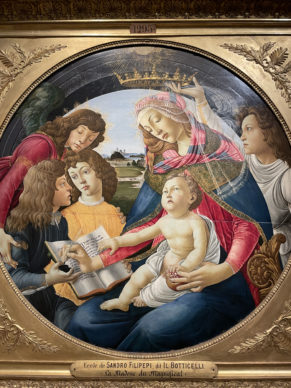
Ana Debenedetti makes it clear that “the conditions for executing works in a 15th-century workshop call into question the notion of the original artwork as we understand it today. Any artwork that comes from the workshop is the fruit of a collaboration, making it no less of a Botticelli artwork because it was produced by his workshop.” She adds: “the genesis of the artworks follows the constant comings and goings of apprentices and collaborators at the workshop.”
Filippo Lippi
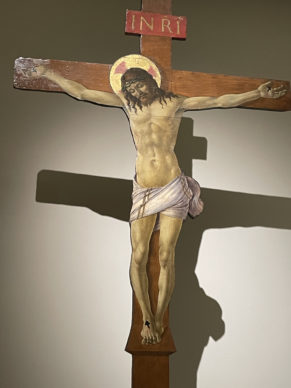
Botticelli
The chronological exhibition opens with the artist’s apprenticeship at the workshop of Filippo Lippi (1406-1469) and compares the differing approaches of master and student. The latter, contrary to the majority of those employed at the studio, never slavishly copied his elder but instead took the principles of his Madonna and Child works and added a great suppleness to their gestures and softer expressions.
A feminine type
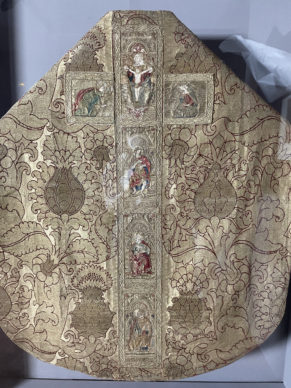
Here he was developing a feminine type that would become his calling card. See his rich and no less graceful Madonna of the Book, made in 1482, adorned with gold touches and a colourful robe with the aid of the expensive lapis lazuli pigment.
His bestsellers
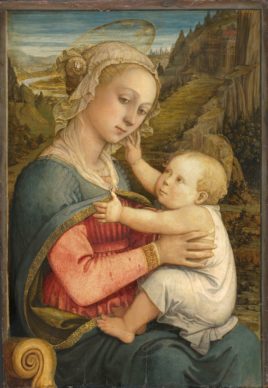
Botticelli invented principles of representation which he repeated from one composition to the next. He designed a Minerva to serve as a model for a tapestry and also to feature on a coin. Two large nude Venuses were his bestsellers in Florence during the 15th century.
La Bella Simonetta

Featuring a dark background, porcelain complexion, modest poses and windswept hair, these dreamy nudes hang alongside the most fascinating painting in the exhibition: La Bella Simonetta. This elegant and sensual creature, hair intricately styled, may have been a celebrity of the time called Simonetta Vespucci, or she may be an idealized woman whose profile was particularly appreciated by the clientele.
Giuliano de’ Medici

In the same spirit Botticelli depicts Giuliano de’ Medici, most likely posthumously, no less than three times. “Turning to duplication (sometimes in series) had the advantage of keeping sales flowing while freeing up the ‘capobottega’ who could then focus on creating new compositions,” explains the curator.
Vasari
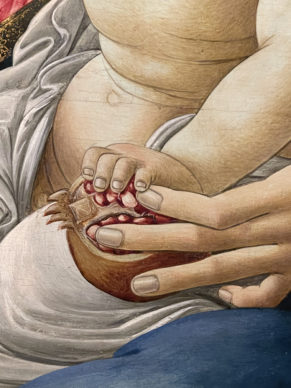
Botticelli (detail)
Giorgio Vasari, biographer of the Renaissance painters, began his description of the master: “For various houses throughout the city he painted round pictures, and many female nudes”.
Commercial behaviours

Botticelli (detail)
The genius repeated himself for commercial reasons by multiplying his standard formulae, but six centuries later we still continue to appreciate his ability to imbue his figures with power and grace.
4o works

The show brings together around forty works supervised by the master; a miracle during these times when it’s so difficult to stage an exhibition.
Support independent news on art.
Your contribution : Make a monthly commitment to support JB Reports or a one off contribution as and when you feel like it. Choose the option that suits you best.
Need to cancel a recurring donation? Please go here.
The donation is considered to be a subscription for a fee set by the donor and for a duration also set by the donor.



